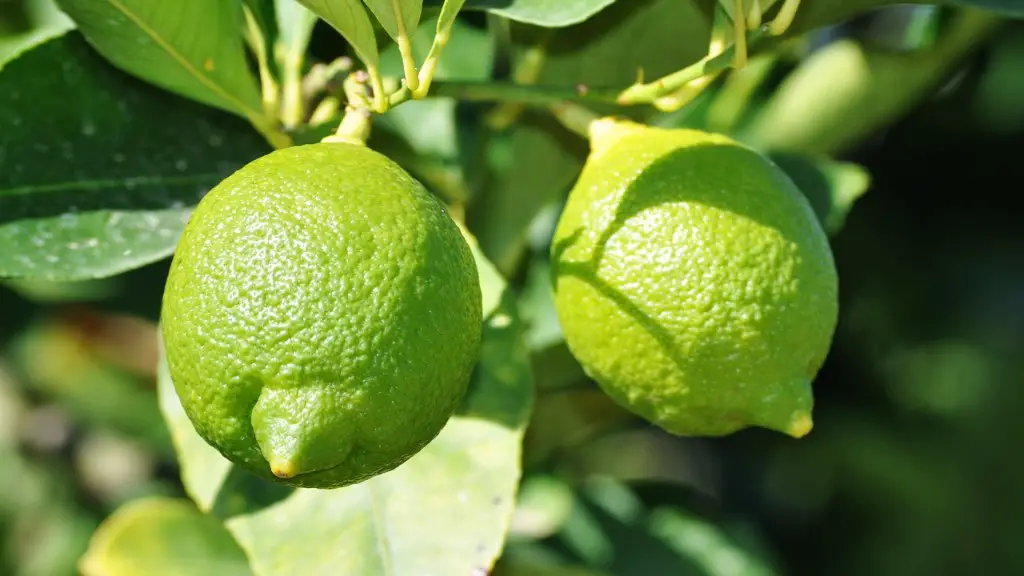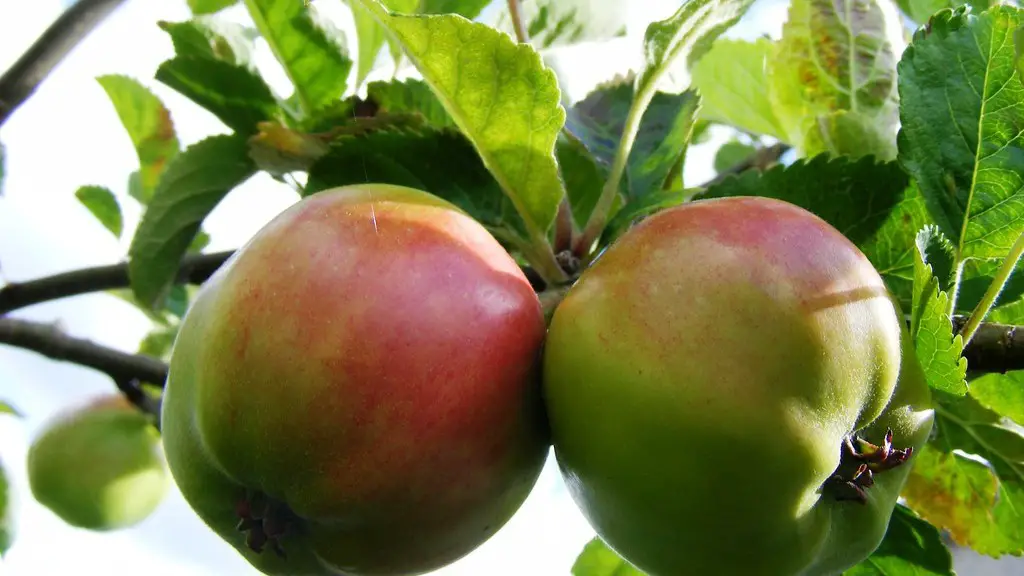Lemon trees are one of the most popular citrus trees to grow in the home landscape and they are relatively easy to care for. One of the most common ways to propagate lemon trees is by rooting lemon tree cuttings in water. To do this, take a 4-6 inch cutting from a healthy branch on the lemon tree and remove the leaves from the bottom half. Then, dip the bare section of the cutting into rooting hormone and place it in a container of water. Keep the container in a warm area out of direct sunlight and wait for the cutting to develop roots, which can take 4-6 weeks. Once the roots are about an inch long, you can transplant the cutting into a pot or into the ground.
To propagate a lemon tree, you will need to take a 6-8 inch cutting from an existing tree. Be sure to select a cutting that has green, healthy wood and is free of any diseases. Cut the stem at a 45 degree angle just below a leaf node. Dip the cut end of the stem in rooting hormone and plant in a pot filled with sterile potting mix. Water well and place in a warm, bright location. Keep the soil moist but not soggy and in 6-8 weeks your cutting should have rooted and be ready to transplant.
Can I propagate a lemon tree in water?
It is possible to root lemon tree cuttings in water, but it is not as successful as rooting them directly in soil. All of the cuttings that I tried to root in water rotted. I had better success rooting lemon tree cuttings directly in soil!
Budding is a type of grafting that is often used for propagating young citrus trees. It is a relatively simple process that can be done with minimal skill and experience. There are two main types of budding that are commonly used for citrus trees in Florida: the inverted T bud and the chip bud.
The inverted T bud is the most common type of bud used for citrus trees. It is a simple process that involves taking a small piece of bark from the tree that you want to propagate. This piece of bark is then inserted into a small cut in the tree that you are propagating. The cut is made in the shape of a T, and the piece of bark is inserted so that it is pointing downwards.
The chip bud is another type of bud that is commonly used for citrus trees. It is similar to the inverted T bud, but the cut is made in the shape of a U. The piece of bark is then inserted into the U-shaped cut so that it is hanging down.
Both of these methods are relatively simple and only require a small amount of skill and experience.
How do you propagate a lemon tree indoors
To propagate a Meyer lemon tree, take a hardwood cutting from a healthy, mature Meyer lemon tree. Remove leaves, flowers, and fruit from the removed portion, leaving four leaves at the top of the cutting. Choose a new pot that can hold at least 1 gallon of potting soil. Place the tip of the cutting into the soil.
To choose the freshest, happiest flowers with preferably no thorns, look for blooms that are fully open and have vibrant colors. Avoid flowers that are wilting, have browning petals, or are otherwise damaged. If possible, smell the flowers to make sure they have a pleasant fragrance.
Can you give Miracle Grow to lemon trees?
This product is great for trees and shrubs! It’s a water soluble all purpose plant food that can be used on all types of trees and shrubs.
Lemon trees can be grown from cuttings from spring to early summer. First, take a 6-inch cutting with no fruit or flowers. Your cutting must have at least two or three nodes where leaves emerge along the stem, and show no signs of disease, damage or stress. Cut the stem at a 90-degree angle with sanitised secateurs.
What are the five 5 Methods of propagation?
Asexual propagation is a process of reproducing new plants from a single parent plant. The major methods of asexual propagation are cuttings, layering, division, budding and grafting.
Cuttings involve taking a piece of the parent plant and growing it in a medium that encourages root growth. Layering is a form of asexual propagation where a part of the parent plant is buried in a medium to encourage root growth. Division involves separating a parent plant into multiple parts, each of which can be grown as a new plant. Budding and grafting are two methods where a part of the parent plant is joined to another plant to encourage growth.
Herbs are generally quite easy to root in water, especially soft-stemmed herbs such as basil, mint, lemon balm, oregano, and stevia. Woody herbs like rosemary, sage, oregano, and thyme can also be rooted in water, but it’s best to use cuttings from new, green growth for these; older brown stems do not sprout roots easily.
Can you grow a Meyer lemon tree from a cuttings
To propagate a Meyer lemon tree, cut off a healthy new stem with no fruit or flowers in the late spring or early summer. Bury it (cut side first) in a 1-gallon pot with high-quality potting mix, and set it in a bright spot.
There are many benefits to growing an indoor lemon tree. Lemons are a great source of Vitamin C and can be used in many recipes. They also have a unique flavor that can enhance the taste of many dishes.
To grow an indoor lemon tree, you’ll need to choose the right tree and meet its needs. Make sure you select a dwarf variety that is specifically grown for indoor containers. These trees are more resistant to pests and diseases and can better tolerate the indoor environment.
Place your lemon tree in a sunny spot near a window. Water it regularly and fertilize it monthly. Provide good drainage for the root system and keep an eye out for pests. With proper care, your indoor lemon tree will thrive and you’ll be able to enjoy its fresh lemons for years to come.
Do lemon trees grow well indoors?
Growing lemon trees indoors is possible but they need full sun and need to be outdoors in the summer. They are also very fragrant and can make you forget the cold weather outside.
Plants need sunlight to grow, so it’s important to choose a south-facing window or a bright sunroom for them. You should also avoid sites close to heating vents or doors that will be opened in cold weather, as this can dry out the plants. reduce watering during winter months, and only water when the soil is dry to the touch.
Can you remove and replant a lemon tree
Citrus trees can be transplanted and will do best if given full sun exposure. The best time to transplant citrus is in the spring. Get as much of the root ball as possible and dig the hole wider than deep. Add nothing to the hole.
Although it takes a few years for a lemon tree to mature and produce fruit, it is fairly easy to grow a small lemon tree in a pot. These trees make a nice addition to your home and can provide you with fresh lemons for a few months each year.
Can you plant seeds straight from a lemon?
Fruit varieties grown today have been carefully bred over many years to produce the sweetness and lack of seeds that we now expect. If you plant a lemon seed, the tree that grows from it will likely not bear fruit.
Lemon trees really benefit from the nitrogen and calcium that are in coffee grounds. The organic material in the coffee grounds also helps to improve the soil tilth. It’s best to only use coffee grounds after they have been fully decomposed in the compost pile.
Is Epsom salt good for lemon trees
If the leaves on your lemon tree are turning yellow, it is likely due to a lack of magnesium in the soil. Epsom Salts can help correct this deficiency – simply mix 30g of Epsom Salts per litre of water (approximately 2 tablespoons), and apply to the tree.
Lemon trees are popular additions to many homes and gardens, but there are a few things to consider before planting one in a container. One issue is that lemon trees in containers are more vulnerable to the cold and drought. While a lemon tree in the ground can take mild frost and cold, a lemon tree in a container cannot. A lemon tree in a container has a hardiness zone that is one zone higher than the USDA recommended zone. This means that if you live in an area with harsh winters, it’s important to choose a container that is large enough and insulated enough to protect your tree. You should also be extra careful to water your container-grown lemon tree regularly, as it is more susceptible to drought than a ground-grown tree. With a little extra care, though, a lemon tree can thrive in a container and provide you with fresh, delicious lemons for years to come.
Final Words
To propagate a lemon tree, start by taking a 6-8 inch cutting from a healthy mother plant. Strip the leaves off of the bottom half of the cutting, and dip the cut end into rooting hormone. Next, insert the cutting into a pot filled with moistened potting mix. Keep the cutting in a warm, sunny spot, and water it regularly. In 4-6 weeks, you should see new growth.
The best way to propagate a lemon tree is to take a cutting from an existing lemon tree. The cutting should be about 6 inches long and taken from a branch that is at least a year old. Once you have your cutting, you will need to remove any leaves from the bottom half of the cutting. Next, you will need to make a cuts about 1/2 inch deep into the bottom of the cutting. After that, you will need to dip the cutting into rooting hormone and then place it into a pot filled with well-draining potting mix. Be sure to keep the pot in a warm place and keep the soil moist. In about 6-8 weeks, you should see new growth and after 3-4 months, you can transplant your new lemon tree into its permanent home.





